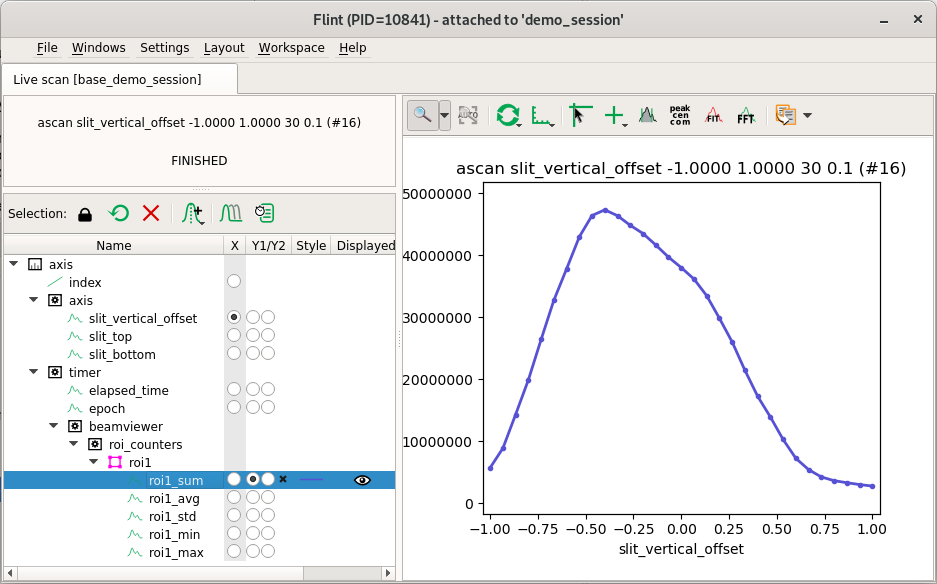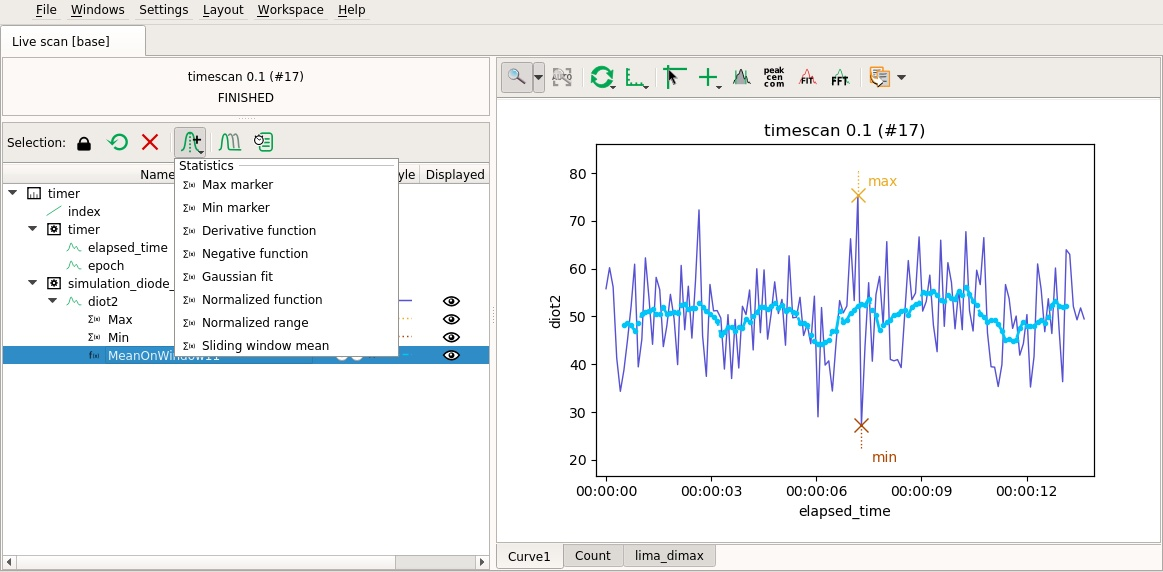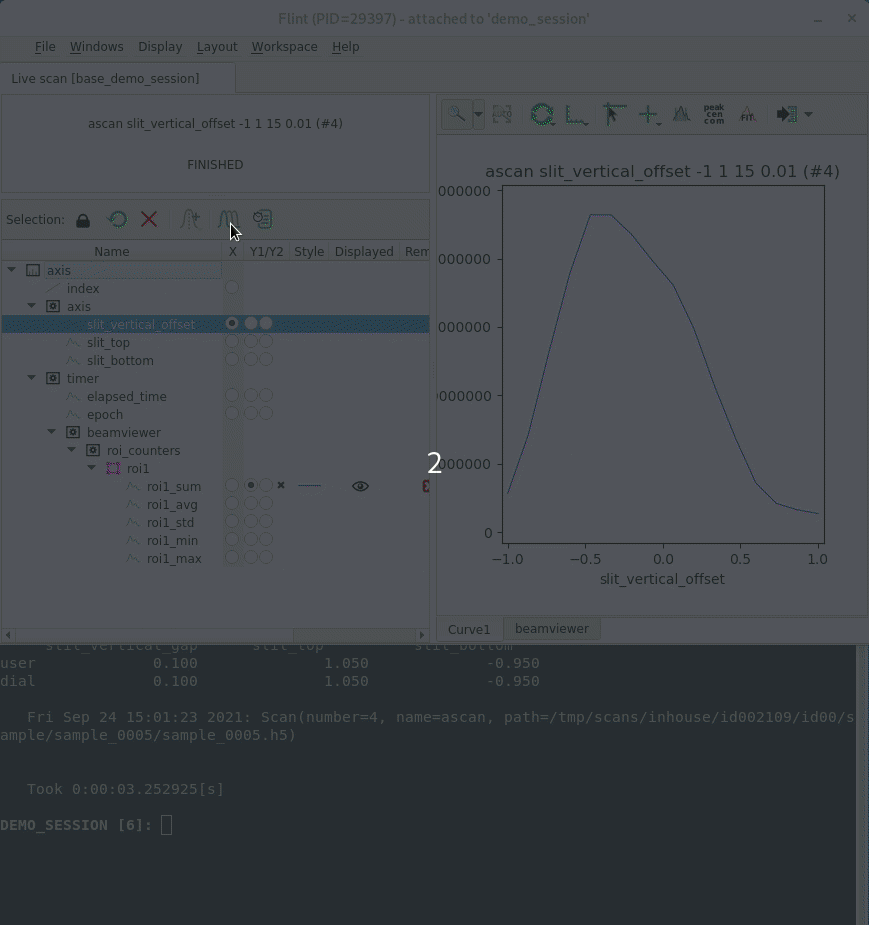Live curve¶
If the scan contains counters, the curve widget will be displayed automatically.

Statistic tools¶
Some statistics can be added to the graph as curve or markers.
By clicking on the “Create new items in the plot” ![]() icon, a new curve or marker can be
added to represent a calculation based on the current curve.
icon, a new curve or marker can be
added to represent a calculation based on the current curve.
The statistical filters available are:
- Max marker
- Min marker
- Derivative function
- Negative function
- Gaussian fit
- Normalized function
- Normalized range
- Sliding windows mean
For example, on this plot, min/max markers and a 11-points sliding window mean have been added.

Compare scans¶
A tool provided in the property tool bar allow to compare scans.
When activated is allows to stack new coming scans.
The channel selection will be displayed for the whole scans.
If the scan to compare with is still in the Redis history, it can be loaded with the dedicated tool from the property tool bar.

APIs¶
Here is the available commands which can be used from the BLISS shell.
Get the plot¶
Here is a way to access to a curve plot from BLISS.
f = flint()
scan = ascan(sx,0,2,100,0.01, diode1, diode2)
# Make sure flint is up to date with the last scan
f.wait_end_of_scans()
# Get the live plot
p = f.get_live_plot("default-curve")
Interactive data selection¶
This plot provides an API to interact with region of interest.
Axis scale¶
# Change the axis scale
p.yscale = "log" # Or "linear"
Axis channel¶
You can retrieve the name of the channel used as axis.
p.xaxis_channel_name
The result is from the BLISS nomenclature. For example
axis:slit_vertical_offset or timer:elapsed_time. If nothing is selected the
result also can be None.
User data¶
The following lines shows how to add processed data from BLISS shell.
scan = ascan(sx,0,2,100,0.01, diode1, diode2)
# Denoise the signal from the diode1
import scipy.signal
ydata = scan.get_data()[diode1.fullname]
n = 15
b = [1.0 / n] * n
ydenoised = scipy.signal.lfilter(b, 1, ydata)
# Make sure flint is uptodate with the last scan
f.wait_end_of_scans()
# Get the live plot and attach the denoised signal to the diode1
p = f.get_live_plot("default-curve")
p.update_user_data("denoized", diode1.fullname, ydenoised)
Axis markers¶
Code example to add a marker (vertical line) on a curve.
A marker is relative to an axis. Here mm2 is expected, and the marker
will only be displayed if this axis is the actual one used in the plot.
ascan(mm2, 3.14, 7.28, 5, 0.1, savoie)
p = flint().get_live_plot("default-curve")
p.update_axis_marker("mark5d", "axis:mm2", 5.01, "bla bla")